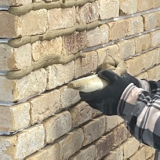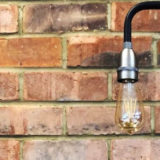Pointing, an essential process in masonry, refers to the external part of mortar joints in construction. With brick slips, pointing becomes crucial not just for the structure but also for aesthetics. This article delves deep into brick slip pointing mortar, shedding light on its significance and usage.
Introduction to Brick Slip Pointing
Background: Brick slips, often known as brick tiles, are thin cuts of brick or purpose-made brick-like facades used predominantly for wall cladding. Pointing enhances their structural integrity and appearance.
Purpose: The primary role of pointing mortar is to provide a weatherproof joint and prevent the ingress of moisture, which could harm the wall’s structure.
Advantages of Using Pointing Mortar
Durability: Proper pointing mortar application extends the life of the brick slips by preventing water entry.
Aesthetic Improvement: Pointing mortar can be finished in various styles, enhancing the wall’s overall appearance.
Composition and Types
Lime-Based: Traditional mortar, made from lime, sand, and water, offers flexibility and is often used in older buildings. This is the same as the mortars we supply over on our Mortars shopping page. The reason we prefer Limebased bagged mortars is the colour is always consistantly the same regardless of how many mixes you make.
Cement-Based: Modern mortar that provides more strength but is less flexible. Suitable for areas that experience more extreme weather conditions, As massive downside to Cerment based mortar, and this also contributes to the reason that we don’t recommend it, colour and consistancy isn’t s isn’t easily achievable.
You’ll be likely to never mix the same colour twice which makes is so difficult to mix the same colour mortar when matching a previous mortar mix.
Application Tips
Surface Preparation: Before applying, ensure the brick slips are clean and free of loose material.
Mortar Mixing: Follow manufacturer recommendations. A well-mixed mortar will have a smooth consistency.
Common Mistakes and How to Avoid Them
Inconsistent Mix: Use the same sand and mortar ratios to maintain a consistent color and texture.
Poor Joint Filling: Ensure all gaps are filled completely to avoid moisture infiltration.
Maintenance and Repair
Cleaning: Use a soft brush to remove dirt and debris. Avoid high-pressure washing which can damage the mortar.
Repointing: Over time, mortar can deteriorate. Repointing is the process of renewing the pointing, which can be done when needed.
Cost Implications
Budget Options: Basic cement-based mortars are usually more affordable and are suitable for many standard applications.
Premium Choices: Specialized mortars, such as those with added polymers or color tints, come at a higher cost.
Conclusion
Brick slip pointing mortar is not just about filling gaps; it’s an art that blends function with form. Properly pointed brick slips not only stand the test of time but also elevate the look of any structure.
Whether renovating an old home or constructing a modern building, never underestimate the power of correctly pointed brick slips.
FAQs
- How often should repointing be done?
Typically, every 50-60 years, but it depends on the wall’s exposure to weather conditions. - Can I repoint brick slips myself?
Yes, with the right tools and knowledge, but it’s often recommended to hire professionals for a flawless finish. - Why is lime-based mortar considered more flexible?
Lime-based mortars can move with slight structural shifts, reducing the risk of cracks. - Is coloured pointing mortar durable?
Yes, as long as it’s from a reputable manufacturer. The color usually lasts as long as the mortar itself. - What’s the difference between pointing and repointing?
Pointing is the original process of filling joints, while repointing is the act of renewing or replacing old, worn-out mortar.




































